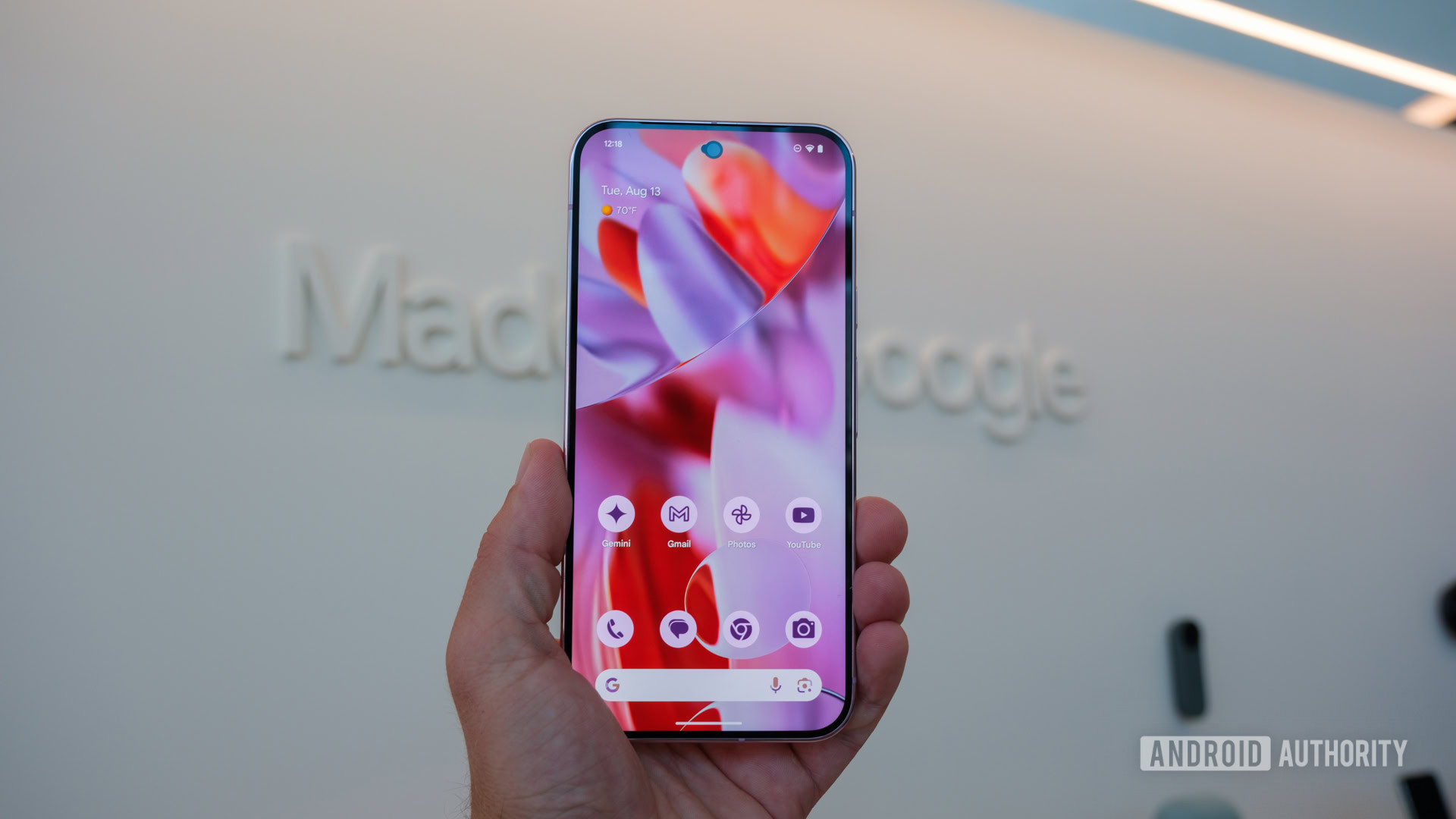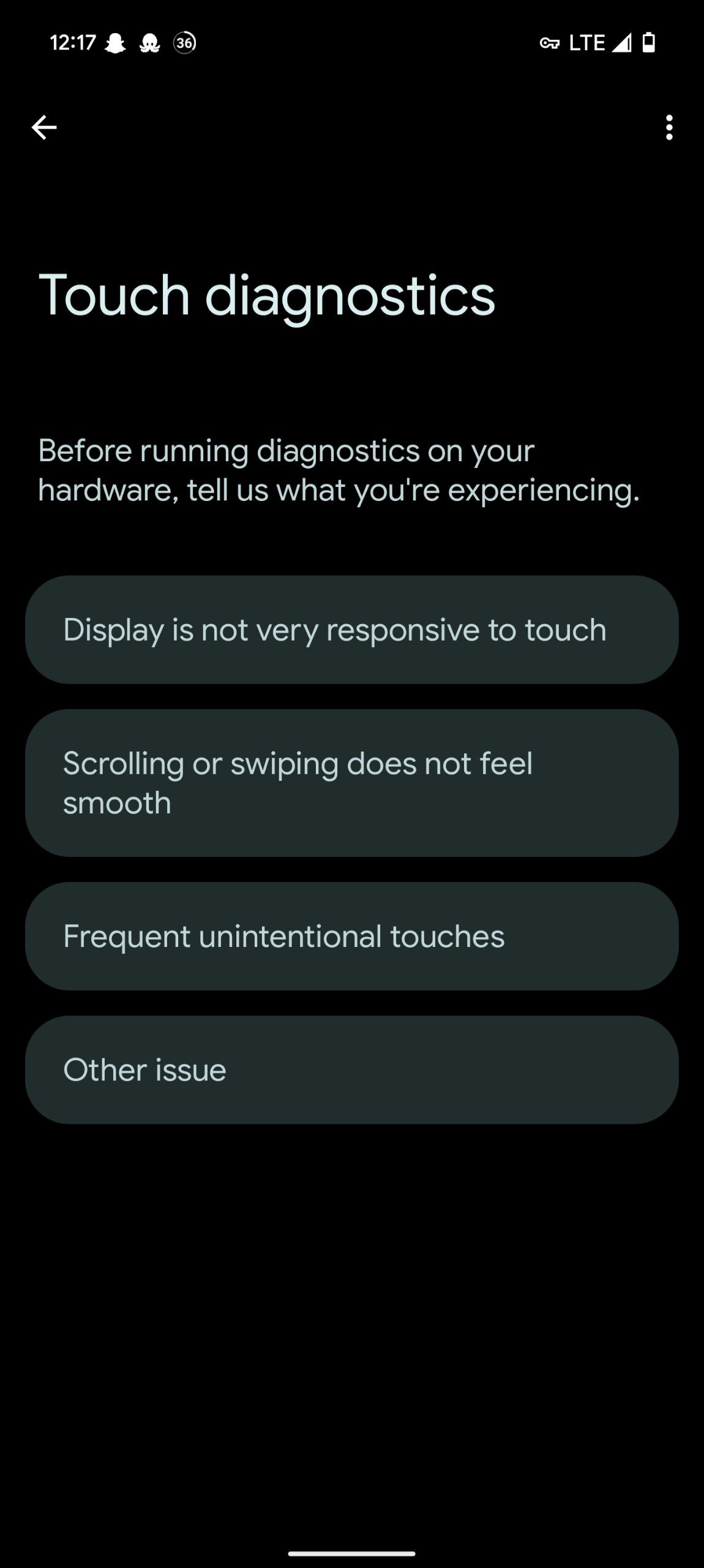Affiliate links on Android Authority may earn us a commission. Learn more.
Adaptive Touch quietly launches on the Google Pixel 9, works really well

- The Google Pixel 9 has a new Adaptive Touch feature that’s enabled by default.
- Adaptive Touch automatically adjusts your Pixel 9’s touch sensitivity based on various factors.
- For example, it boosts the sensitivity when your fingers are wet or when you apply a screen protector.
The Google Pixel 9 series just debuted less than two weeks ago, and we’re still finding new aspects about the phones that Google didn’t tell us about. That isn’t too surprising, considering the Made by Google keynote lasted about an hour and twenty minutes, with twenty of those minutes being spent on Google’s AI services rather than the new hardware. Even so, we thought we already knew everything there was to know about the Pixel 9’s display, but as it turns out, it still had one more trick up its sleeves: Adaptive Touch.
Tucked under Settings > Display > Touch sensitivity is a new Adaptive Touch feature. When Adaptive Touch is enabled, “touch sensitivity will automatically adjust to your environment, activities and screen protector.”
If this feature sounds familiar, it’s because we reported back in March that the Pixel 9 may debut Adaptive Touch. At the time, though, we didn’t know what environmental factors or activities would cause the Pixel 9’s touch sensitivity to be automatically adjusted. Now that we have the device in our hands, though, we can confirm that wet fingers (or rather, a wet screen) are one factor that impacts touch sensitivity.
We compared the touch sensitivity of the Pixel 9 with Adaptive Touch to a Pixel 8 Pro without Adaptive Touch, and the results were clear: the Pixel 9 works much better with wet fingers than the Pixel 8 Pro. As you can see in the video embedded in this article, scrolling with a wet finger looks pretty normal on the Pixel 9. In contrast, there are random jumps and pans on the Pixel 8 Pro when scrolling with a wet finger.
Although I don’t have a screen protector yet for my Pixel 9, I’m guessing that Adaptive Touch will simply boost the touch sensitivity whenever it detects that a screen protector has been applied to the device. If so, then this aspect of Adaptive Touch isn’t actually new functionality, as this also happens with the Pixel 8 as well. The difference now is that the Pixel 9 can automatically adjust its touch sensitivity in more scenarios beyond just screen protectors.
The Adaptive Touch feature was enabled by default on our Pixel 9 review unit as well as on a Pixel 9 Pro XL retail unit running the stock firmware. Thus, you don’t need to dive into the Settings app to enable it. I’m not sure why you’d ever want to disable Adaptive Touch, but if you do, the toggle can be found under Settings > Display > Touch sensitivity, as mentioned previously.
If you’ve picked up a Pixel 9 already, let us know how its touch sensitivity compares to your previous phone! And if you have issues with touch sensitivity on the new phone, you can try the new Touch diagnostics troubleshooting menu under Settings > Display.

Thanks to Alexandria on Telegram for the tip and screenshots!